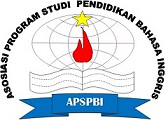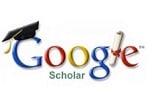Fostering Motivation and Adopting Learner-centred Teaching Strategy Through EFL Literature Circles- the case of a tertiary level, Algeria
Abstract
Abstract
This paper examines and reports on an EFL literature course design and instruction. The researcher believed that EFL Literature Circles instruction in practice is an issue worthy of concern. A new teaching plan was designed to motivate students in practising reading literary texts and implementing activities. The plan consisted of assigning learners with various reading activities to literary genres that were done in groups and presented in the classroom. Qualitative and quantitative methods were used in this study. Based on the data obtained from classroom observations, students’ classroom presentations, focus group interview; students’ response to a questionnaire and a post-questionnaire of (30 students), the researcher found out that students developed a fairly high degree of motivation towards practising literary reading. The results of the study also indicated that the students were motivated; the course was conducive to students’ language awareness and acquisition and contributed to students’ literary growth. Learning literature through literature circles gave more freedom to learners to take risks, learn by themselves and profit from their mates without resorting to teachers in most cases. (184 words)
Keywords
Full Text:
PDFReferences
Aguilar, E. (2010). The power of literature circles in the classroom. George Lucas Educational Foundation, Edutopia Teacher Leadership. Retrieved from https://www.edutopia.org/blog/literature-circles-how-to-and-reasons-why-elena-aguilar
Agustini, F. & Adinuansah (2018) Analysis of the Factors Influencing Students’ Motivation in Learning English. The Asian EFL Journal, April 2018, Volume 20, Issue 4 A Division of TESOL Asia Group Part of SITE Ltd. Australia
Akyel, A., & Yalcdin, E. (1990). Literature in the EFL classes: A study of goal achievement incongruence. ELT Journal, 44(3), 174-180.
Almasi, J. F. (1995). The nature of fourth - graders’ socio-cognitive conflicts in peer-led and teacher-led discussions of literature. Reading Research Quarterly, 30(3), 314–351.
Amara,Y., Joe,A.&, Melor, Y. & Azlina A. (2018) ESL Trainee Teachers’ Approaches and Activities in Teaching Literature: Usage, Factors and Confidence The Asian EFL Journal , April 2018, Volume 20, Issue 4 A Division of TESOL Asia Group Part of SITE Ltd. Australia
Allen, V.F. (1978). Smite insights from linguistics for the teaching of literature. In: M.K. Burt & H. Dulay (Ed.) New directions in second language learning, teaching and bilingual education. Washington: TESOL.
Arif,.H., L. (2018) Literature Circles as a Facilitator to Promote Composition Process A Voice from Tertiary EFL Students. The Asian EFL Journal, April 2018, Volume 20, Issue 4 A Division of TESOL Asia Group Part of SITE Ltd. Australia
Arthur, B. (1968). Reading Literature and Learning a Second Language. Language Learning, 28, 199-210.
Ayotola, A. (1998). Motivating Learners for more effective achievement in mathematics. Nigerian Journal of Applied Psychology, 4(1), 27-34
Bassnett, S., & Grundy, P. (1993). Language through literature. London: Longman
Bernhardt, E. B. (1986). Proficient Texts or Proficient Readers? ADFL Bulletin, 18, 25–28.
Beyer, B. K. (1995). Critical Thinking. New York: McGraw Hill.
Bomia, L., Beluzo, L., Demeester, D., Elander, K., Johnson, M., & Sheldon, B. (1997) The impact of teaching strategies on intrinsic motivation.
Champaign, IL: ERIC Clearinghouse on Elementary and Early Childhood Education. (ED 418 925)
Brumfit, C. J., & Carter, R. A. (1986). Literature and language teaching. Oxford: Oxford University Press.
Brumfit, C. J., & Carter, R. A. (1991). English literature and the English language. In C. J. Brumfit & R. A. Cater (1986) Literature and Language Teaching (pp. 2-21). Oxford: Oxford University Press.
Bruner, J. (1996). The culture of education. Cambridge, MA: Harvard University Press.
Carter, R. (1999). Common Language: Corpus, Creativity and Cognition. Language and Literature, 8 (93), 195-216.
Chang, Y.-L. (1997). A secret garden in children’s literature in EFL instruction. Proceedings of the Fourteenth Conferences on English Teaching and Learning in the Republic of China (pp. 379-81). Taipei, Taiwan: Crane. Cambridge: CUP.
Conniff, B., Bortle, C., & Joseph, M. F. (1993). Poetry in the adult literacy class. Journal of Reading, 37(4), 304-308.
Constantino, R. (1994). Pleasure reading helps, even if readers don’t believe it. Journal of Reading, 37(6), 504-505.
Csikszentmihalyi, M. (1997). Intrinsic motivation and effective teaching: A flow analysis. In J. L. Bess (Ed.), Teaching well and liking it: Motivating faculty to teach effectively (pp. 72 – 89). Baltimore, MA: Johns Hopkins University Press.
Daniels, H. (2002). Literature circles: Voice and choice in book clubs and reading groups. Stenhouse Publishers.
Dembo, M. H. (1994). Applying educational psychology (5th ed.). White Plains, NY: Longman Publishing Group.
Dogan, B., & Kaya-Tosun, D. (2020). An effective method in improving social skills: Literature circles. International Journal of Educational Methodology, 6(1), 199-206. https://doi.org/10.12973/ijem.6.1.199
Dörnyei, Z. and Csizér, K. 1998. Ten commandments for motivating language learners: results of an empirical study. Language Teaching Research, 2 (3), pp.203-229.
Dörnyei, Z., & Ryan, S. (2015). The psychology of the language learner revisited. New York, NY: Routledge.
Eco, Umberto. (1984). The Role of the Reader. Bloomington: Indian University Press.
Ediger, M. (2002). Literacy and literature circles. ERIC. https://eric.ed.gov/?id=ED467513
Gagne, E. D., Yekovich, C. W., & Yekovich, F. R. (1993). The cognitive psychology of school learning. New York: HarperCollins College Publishers
Gajdusek, L. (1988). Toward wider use of literature in ESL: Why and how. TESOL Quarterly, 22(2), 227-257.
Gajdusek, L., & Van Dommelen, D. (1993). Literature and critical thinking in the composition classroom. In J. G. Carson & I. Lek. (Eds.), Exploring reading/writing relationships in adult language learners (pp. 197-217). Boston, MA: Heinle & Heinle.
Ghosn, I. (2002). Four Good Reasons to Use Literature in Primary School ELT. ELT Journal, 56, (2), 172-179.
Gloria, B. W. (2011) Student-Centred Learning in Higher Education. International Journal of Teaching and Learning in Higher Education, Volume 23, Number 3, 92-97 / ISSN 1812-9129 http://www.isetl.org/ijtlhe
Gupta, D., & Seymon; G. (2011) The Influence of motivation and Attitude on writing strategy use of Undergraduate EFL Students; Quantitative and Qualitative Perspectives. Published by the Asian EFL Journal Press, June 2011 Vol.13 Issue 2 pp.34-89 Busan, Korea
Hill, J. (1986). Teaching literature in the language classroom. London: Macmillan Publishers Ltd.
Holmer Paul L. (1976). C. S. Lewis: The Shape of His Faith and Thought. London: Sheldon Press.
Hsieh, L. T. (1999). Teaching literature in an EFL classroom. Journal of National Pingtung Institute of Commerce, 1, 171-184.
King, C. (2001). I like group reading because we can share ideas: The role of talk within the literature circle. Reading, 35(1), 32–36.
Javonsky, A. (2018). How literature circles benefit reading comprehension. Retrieved from https://study.com/academy/lesson/how-literature-circles-benefit-reading-comprehension.html
Joseph, P. B., Bravmann,S. L., Windschitl, M. A., Mikel, E. R., & Green, N. S. (2000). Cultures of Curriculum. Mahwah, NJ: Lawrence Erlbaum Associates.
Kantanis, T. (2001) Transition to Self-directed Learning: Issues Faced by Students in Adjusting to the First-Year at University, Paper presented at The Eighth International Learning Conference, Spetses, Greece, July 4-8.
Knapper, C. K., & Cropley, A. J. (2000) Lifelong Learning in Higher Education (3rd ed). London: Kogan Page.
Kramsch, C., & Kramsch. O. (2000). The Avatars of Literature in Language Study. The Modern Language Study, 84, 553-573
Krashen, S. (1989). We acquire vocabulary and spelling by reading: Additional evidence for the input hypothesis. The Modern Language Journal, 73(4), 440-464.
Larsen-Freeman, D., & Long, M. H. (2014). An introduction to second language acquisition research. New York, NY: Routledge.
Lazar, G. (1993). Literature and language teaching. Cambridge: Cambridge University Press.
Liaw, M.-L. (1995). Looking into the mirror: Chinese children’s responses to Chinese children’s books. Reading Horizon, 35(3), 185-198.
Liaw, M.-L. (2001). Exploring literary responses in an EFL classroom. Foreign Language Annals, 34(1), 35-45.
Lopez, M., C. d. P. (2007). Literature circles: A door to students' life experiences in the classroom. Colombian Applied Linguistics Journal, (9), 247–261.
Lono, L. P. (1987). Cultural aspects in the development of reading comprehension skills. In C. Cargill (Ed.), A TESOL Professional Anthology (pp. 79-92). Lincolnwood, IL: National Textbook Company.
Maley, A. (1989). Down from the Pedestal: Literature as Resource. In R. Carter, R. Walker & C. Brumfit (Eds.). Literature and the Learner:
Methodological Approaches. Modern English Publications and the British Council.
Mc Conochie, J. (1985). “Musing on the lamp-flame”: Teaching a narrative poem in a college-level TESOL class. TESOL Quarterly, 19(1), 125-136.
McKenzie, K., & Schweitzer, R. (2001) Who succeeds at university? Factors predicting academic performance in first- year Australian university students. Higher Education Research and Development, 20, pp. 21-33.)
Martin, A. L., & Ian, L. (1993). Student views about the contribution of literary and cultural content to language learning at an intermediate level. Foreign Language Annals, 26(2), 188-207.
McKay, S. (1982). Literature in the ESL classroom. TESOL Quarterly, 16(4), 529-536.
McRae, J. (1991). Applying the Buzzwords. Literature for Language Learners. British Book News 4,32- 37.
Moody, H.L.B. (1971). The Teaching of Literature in Developing Countries. London. Longman Group.
Nelson, G. L. (1987). Culture’s role in reading comprehension: A schema theoretical approach. Journal of Reading, 30(5), 424-429.
Noels, K. A., Clėment, R., and Pelletier, A. G. (2001). Intrinsic, extrinsic, and integrative orientations of French-Canadian learners of English. The Canadian Language Review, 57, 424-442.
Oster, J. (1989). Seeing with different eyes: Another view of literature in the ESL class. TESOL Quarterly, 23(1), 85-103.
Oxford, R., and Shearin, J. (1994). Language learning motivation: Expanding the theoretical framework. The Modern Language Journal, 78, 12-27.
Peterson, S., & Belizaire, M. (2006). Another Look at Roles in Literature Circles, Middle School Journal, 37(4), 37–43. https://doi.org/10.1080/00940771.2006.11461544
Pintrich, P.R., Smith, D.A., Garcia, T., & Mc Keachie, W.J. (1993) Reliability and predictive validity of the motivated strategies for learning questionnaire (MSLQ). Educational and Psychological Measurement, 53, 801-813.
Povey, J. (1972). Literature in TESL program: The language and the culture. In H. Allen & R. Campbell (Eds.), Teaching English as a second language. New York: McGraw-Hill.
Ruby, J., Gordon, T., & Bizero, L. (2003). Fostering multi-layered literacy through literature circles. TESOL journal, 12(3), 47–52.
Sage, H. (1993). Fictional flights. Boston, MA: Heinle & Heinle.
Schoonmaker, R. G. (2014). A blended learning approach to reading circles for English language learners. Second Language Studies, 33(1), 1–22.
Sage, H. (1987) Incorporating Literature in ESL Instruction. New Jersey: Prentice-Hall, Inc.
Short, M. (1996). Exploring the language of poems, plays and prose. London: Longman.
Schulz, R. A. (1981). Literature and readability. Bridging the gap in foreign language reading. Modern Language Journal, 65(1), 43-53.
Spack, R. (1985). Literature, reading, writing, and ESL: Bridging the gap. TESOL Quarterly, 19(4), 703-725.
Sternberg, R. J. (2002). The theory of successful intelligence and its implications for language aptitude testing. In P. Robinson (Ed.), Individual differences and instructed language learning (pp. 13 – 43). Philadelphia, PA/Amsterdam, The Netherlands: John Benjamins.
Swaffar, J. K. (1985). Reading Authentic Texts in A Foreign Language: A Cognitive Model. MLJ, 69, 15-34.
Swaffar, J. K (1988). Readers, Texts, and Second Languages: The Interactive Processes. MLJ, 72, 123-149.
Swaffar, J. K., Arens, K. M., & Byrnes, H. (1991). Reading for Meaning. An Integrated Approach to Language Learning. Englewood Cliffs, NJ: Prentice -Hall.
Thanasoulas, D. (2002) “Motivation and Motivating in the Foreign Language Classroom” The Internet TESL Journal, Vol. VIII, No. 11, November 2002
Smith, P.L. and Ragan, T.J. (1999), Instructional Design (2nd Ed), Wiley
Vacca, R. T. (1981). Content area reading. Boston, MA: Little, Brown, & Company.
Wood, J. (2018). Transcending traditional boundaries: Taking literature circles online. Retrieved from http://teacher.scholastic.com/professional/techexpert/litcircles3.htm
DOI: http://dx.doi.org/10.20527/jetall.v5i1.10530
Article Metrics
Abstract view : 354 timesPDF - 303 times
Refbacks
- There are currently no refbacks.
This journal is indexed in:


This Journal is listed in:
 Journal of English Teaching, Applied Linguistics and Literatures (JETALL)
Journal of English Teaching, Applied Linguistics and Literatures (JETALL)








.png)



1.png)
